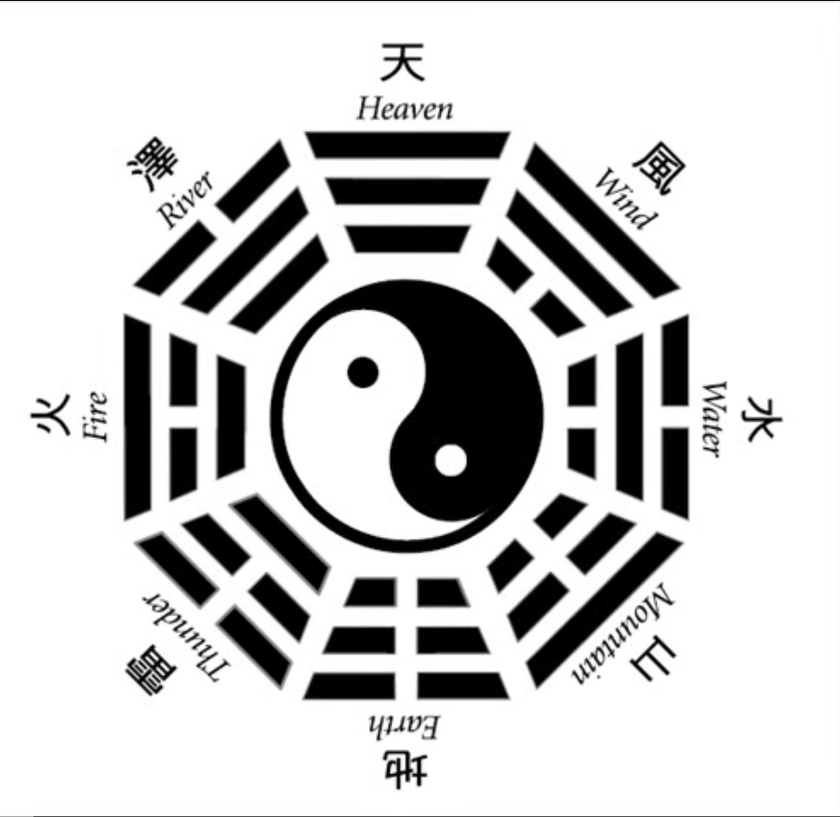These are things to pay attention to while turning but also beyond turning can be applied into all of our training.
The first four pertaining to the arms. The arms follow the turning of the waist. While turning you can get a feel for the waist leading or guiding the hands/arms.
1. Rolling out. In the lion system the forearm rolls out, twisting as it extends outward.
2. Wrapping back in. Working with rolling out, half the arms twisting one way the other half evening out the strength of the arm. In lion the upper arm wraps back in creating more of a twisting spiraling in the arm.
3. Drilling forward. As the arm rolls out in lion it also drills or penetrates forward. Lengthening the muscles and tendons.
4. Pulling back away. Working with drilling, in a similar way as rolling out and wrapping in, the pulling back away helps lengthen and stretch the muscles and tendons. This is evening out the strength and giving more stability and rooting the arm through the sitting down of the shoulder and keeping one from overextending.
The next 4 pertain to the waist. The waist connects the upper and lower body. While turning the arms turn toward the center of the circle while the legs want to step toward the outside. The legs are carried by the turning of the waist.
5. Twisting. A wringing out of the waist, like a towel. Associated with the inner leg/step
6. Whirling. There needs to be a large degree of twisting to get it to lengthen and whirl. Associated with the inner leg/step
7. Walking/moving. Associated with the outer leg/step
8. Turning. Associated with the outer leg/step
The last four are with regard to the feet. The feet follow the turning of the waist, the twisting of the waist pulls/forces the feet and legs to move along with. The knees brushing as they pass one another.
9. Lift. The foot starts to advance as soon as the heal starts to lift. Not rising far off the ground.
10. Place down. The foot steps down evenly and not heal to toe as one normal walks. This gives stability in the step. The weight transfers quickly and the toes grasp the earth.
11. Swing open. The foot steps straight past the knee, just before stepping down the inside foot swings open.
12. Hooking closed. The outside foot similarly hooks closed just before stepping down, the angle should be the same as the swing open step.
Here I introduce the basic elements of the snake system. I will be putting together some of my favorite snake combos in the coming weeks. I’ll try to also upload some run throughs of the applications as I am able.
Here I discuss using the rear hand to directly attack and open the opponent as opposed to the first two methods that address a more responsive role, responding to the opponent by rushing or withdrawing. Here we will initiate an attack in order to cause and utilize the response. Soft and leaning strikes are introduced as well as the method of turning the back.
In this clip I explain how the withdrawing attack method specializes in stepping and how that can be utilized based on the forms and direction changes of the bear system. Drilling these short combos can be beneficial to those new to the art as a way to get familiar with the different systems and strategies. Drilling these combos can also benefit more seasoned practitioners by giving them an idea of how to apply the art in real life situations.
Yin style Bagua is first a combative art. Unlike many traditional arts these days we study strictly for combative use. YSB contains no watered down flamboyance as is found in many other traditional arts in current times. Training of Yin style Bagua is strictly for self defense and is taught as it has been handed down to us from the practitioners who came before us.
Dong Hai Chuan passed down the art of Bagua to Yin Fu, his greatest and longest studied student, to whom this branch of Bagua is named for. Yin Style Bagua differs from other styles of Bagua in many ways. Yin Fu passed his art on to Men Baozhen, who in turn taught Xie Peiqi. Dr Xie trained He Jinbao fully in the combative aspects of this art. All these practitioners hailed from Beijing, where He Jinbao resides to this day. He Jinbao teaches workshop across the United States and Europe annually. There are many study groups in the States that train regularly and come together to attend these workshops throughout the years. ...

Tomorrow our group will be running the interlocking shooting form, from 2024, as well as introducing the new form Matt Bild just uploaded to the Facebook group page, the turning the back shooting form. Should be a blast. Finally have a temperate day here on the east coast for a change.
Slight departure from the snake content but this is what the group studied yesterday. The following post is from the group Facebook page:
Training Lion system yesterday in our study group. Focusing on the different uses of the waist to generate force in the strikes. Moving with the waist, moving against the waist, and expanding the waist.
-The rising sweeping strike was used to emphasize the waist moving with the strike.
-The inward sweeping strike was utilized to place emphasis on the method of the waist moving against the strike.
-And lastly the upright chopping strike was used to emphasize more of a dropping or expanding usage of the waist.
First we started with a stationary strike drilling method to work on the waist and the arm/strike coordination. We then added in a step, using the triangle stepping in place or an advancing-withdrawing type of one step drilling method.
This allowed us to add in hand-foot harmony to the already used hand-eyes and waist-strike coordination. Thus turning...












